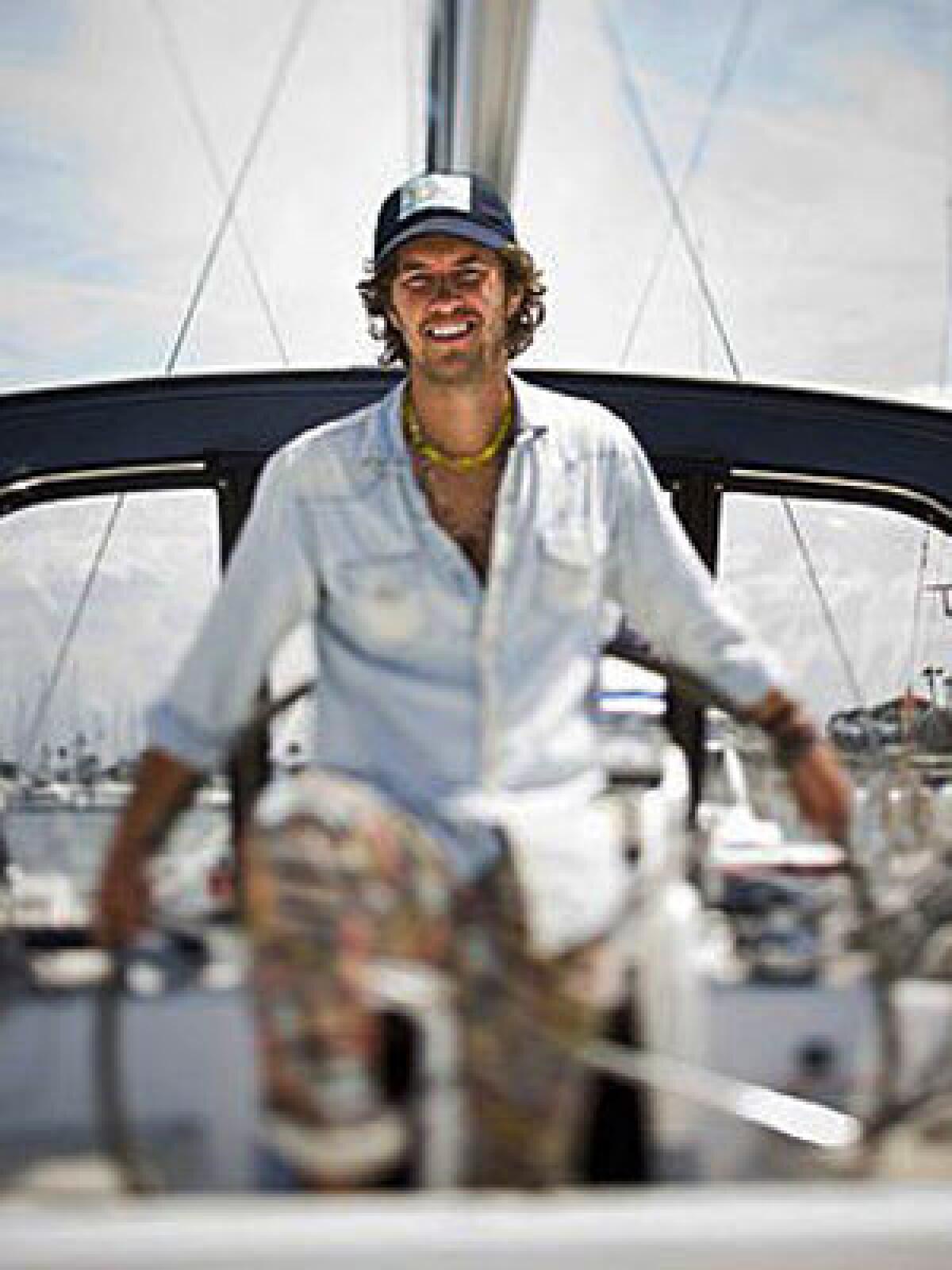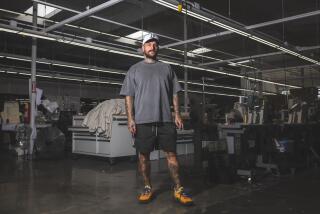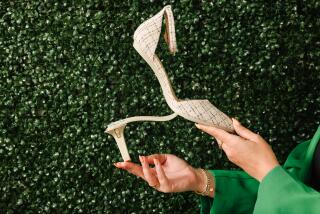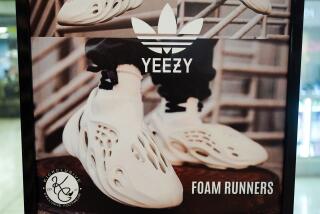Toms Shoes’ model is sell a pair, give a pair away

The power of shoes. It’s something most women and many men understand completely. And it is what transformed the young, shaggy-haired, rope-bracelet-wearing entrepreneur Blake Mycoskie into a visionary business leader hobnobbing with former President Clinton and Nobel Peace Prize winner Desmond Tutu in less than three years. The 32-year-old founded Toms Shoes based on the simple idea that for every pair of his canvas shoes you buy, a pair is given to a child in need.
To date, he’s given away 140,000 pairs of shoes in the U.S., Argentina, Ethiopia and South Africa. This year, Mycoskie expects to donate 300,000 pairs of shoes, bring in $13 million in sales and work toward his goal of eradicating podoconiosis in Ethiopia, a deforming foot disease caused by walking barefoot in silica-rich soil.
It doesn’t hurt that the Arlington, Texas, native has Clinton-like charisma, Hollywood good looks and lives on a boat in Marina del Rey with “Toms” sails. He’s living and selling the SoCal life -- with a social conscience.
The shoes, featuring colorful geometric, tie-dye or glitter designs, start at $44 and come in men’s, women’s and children’s sizes. They’re sold at more than 500 stores nationwide and internationally, including Nordstrom and Whole Foods, which features styles made from recycled materials.
A serial entrepreneur who quotes Richard Branson and the like, Mycoskie started with a college laundry service in 1997. It was so successful, he dropped out of school to run it, and followed it up with a billboard company, which he sold to Clear Channel. A failed reality-show network was next, then a successful drivers education website.
In 2002, he and his sister Paige came in third on “The Amazing Race,” and afterward, they made a point of revisiting some of the places it had taken them. In 2006, Mycoskie returned to Argentina for a vacation, and in a bar, he met some aid workers who were there to distribute shoes to the needy.
They were giving children old, ill-fitting shoes, but Mycoskie had a better idea. On that trip, he had fallen in love with the locally made canvas alpargatas, or espadrilles. Why not build a business around the laid-back shoes, he thought, selling a pair and donating a pair? He started with $500 and 250 prototypes, naming the brand Toms after the concept of shoes for “tom-orrow.”
“Blake ends up doing all the things everyone else just talks about. He just goes for it and learns along the way,” says John Whitledge, a friend who designs the clothing line Trovata. The boat Mycoskie lives on? He bought it before he knew how to sail, along with three how-to-sail DVDs.
Footwear companies have been quicker than others to promote conscientious consumerism, though when Mycoskie launched Toms his efforts were less of a crusade than they are now. His mind-set changed when he went on his first “shoe drop” in Argentina to distribute 10,000 pairs of shoes. “The first shoe I put on a kid’s foot, it was like, this is it. For every kid I saw, there was another I wanted to help.”
Then he found out about podoconiosis. “There are women committing suicide because no one wanted to marry them because they had this disease,” he says, adding that it affects 300,000 people in southern Ethiopia, including one out of every 13 kids. “And it’s literally shoes, not medicine, that cure it. The idea is to hyper-focus on this one area, then take what we do there to someone like Bill Gates, who could eradicate this disease worldwide.”
He’s also hoping his one-to-one business model will expand. “People need water and schoolbooks and housing. I want to come up with partnerships and products that allow our customers to buy what they need so other people can get what they need.”
Although Toms is a for-profit company, Mycoskie runs it like a social movement, with teams of “vagabonds” road-tripping to high school and college campuses around the nation, preaching the message of Toms. They’re armed with video cameras so they can post to TomsShoes.com. A network of college representatives at 200 schools hosts events, screening a documentary about the brand, or throwing shoe decorating parties.
“When you’re buying a pair of Toms, if you don’t feel like you’re part of a community then I’ve failed,” he says.
Mycoskie has amassed followers while speaking around the country -- at the White House, the 2009 TED (Technology, Entertainment, Design) conference and the Clinton Global Initiative Conference. Ralph Lauren asked him to work on a few styles for his Rugby collection, the first time Lauren has collaborated with another brand.
Toms employees are equally enthusiastic. Candice Wolfswinkel, the chief giving officer, worked for free for a year until Mycoskie could pay her. “He is not afraid to show his emotions to make sure people know they are appreciated,” she says. Caroline Zouloumian, chief financial officer and a Harvard MBA, left the world of finance for Toms. “He’s not egocentric like some entrepreneurs are,” she says. More than 1,000 people have applied for this year’s 15 summer internships at Toms.
So far, the company has turned only a marginal profit. Mycoskie says he will have to sell about 1 million pairs of shoes a year to be really profitable. He hasn’t taken on any outside investors.
“The goal isn’t how much money you make,” he says. “But how much you help people.”







